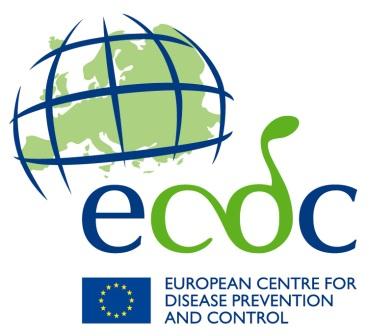This website is run by the University of Edinburgh. We want everyone who visits the Creutzfeldt-Jakob Disease International Surveillance Network website to feel welcome and find the experience rewarding. For example, that means you should be able to:
- change most of the colours, contrast levels and fonts
- zoom in up to 200% without the text spilling off the screen
- navigate most of the website using a keyboard
- navigate most of the website using speech recognition software
- listen to most of the website using a screen reader (including the most recent versions of JAWS, NVDA and VoiceOver)
- ensure no information is conveyed by colour or sound only
We’ve also made the website text as simple as possible to understand.
Customising our site
AbilityNet has advice on making your device easier to use if you have a disability.
AbilityNet - My computer my way
The following links provide guidance on how to change your display settings, depending on your preferred browser:
- Internet Explorer [link - https://support.microsoft.com/en-gb/help/17456/windows-internet-explorer-ease-of-access-options ]
- Windows Edge [link - https://support.microsoft.com/en-gb/help/4000734/microsoft-edge-accessibility-features ]
- Chrome [link - https://support.google.com/chrome/topic/7437725?hl=en&ref_topic=7439724 ]
- Firefox [link - https://support.mozilla.org/en-US/kb/accessibility-features-firefox-make-firefox-and-we%20 ]
- Safari [link - https://support.apple.com/accessibility ]
Contacting us by phone using British Sign Language service
British Sign Language Scotland runs a service for British Sign Language users and all of Scotland’s public bodies using video relay. This enables sign language users to contact public bodies and vice versa. The service operates 24 hours a day.
British Sign Language Scotland service details
How accessible this website is
We know some parts of this website are not fully accessible:
- the text will not reflow in a single column when you change the size of the browser window on some pages
- colours may not exhibit enough contrast on the interactive charts
What are we doing?
To help us make the Creutzfeldt-Jakob Disease International Surveillance Network website a positive place for everyone, we've been using the Web Content Accessibility Guidelines (WCAG) 2.1. These guidelines explain how to make web content more accessible for people with disabilities, and user friendly for everyone.
The guidelines have three levels of accessibility (A, AA and AAA). We’ve chosen Level AA as the target for the Creutzfeldt-Jakob Disease International Surveillance Network website.
What to do if you cannot access parts of this website
If you need information on this website in a different format like accessible PDF, large print, easy read, audio recording or braille:
Email: contact-eurocjd@ed.ac.uk
We’ll consider your request and get back to you in 5 working days.
Reporting accessibility problems with this website
If you are experiencing any problems accessing our information and services online, please let us know:
Email: contact-eurocjd@ed.ac.uk
Technical information about this website’s accessibility
The Creutzfeldt-Jakob Disease International Surveillance Network is committed to making its website accessible, in accordance with the Public Sector Bodies (Websites and Mobile Applications) (No. 2) Accessibility Regulations 2018.
This website is partially compliant with the Web Content Accessibility Guidelines version 2.1 AA standard, due to the non-compliances listed below.
Non accessible content
The content listed below is non-accessible for the following reasons.
1.4.4: Resize text
Some content cannot be presented without loss of information when magnified to the maximum browser level.
1.4.11 Non-text Contrast
Some non-text items may not be fully compliant and may exhibit low contrast.
Enforcement procedure
The Equality and Human Rights Commission (EHRC) is responsible for enforcing the Public Sector Bodies (Websites and Mobile Applications) (No. 2) Accessibility Regulations 2018 (the ‘accessibility regulations’). If you’re not happy with how we respond to your complaint, please contact the Equality Advisory and Support Service (EASS) directly.
Contact details for the Equality Advisory and Support Service (EASS)
Disproportionate burden
We are not claiming disproportionate burden with any part of the website at this time.
Content that’s not within the scope of the accessibility regulations
PDF documents:
The accessibility regulations do not require us to fix PDFs or other documents published before 23 September 2018 if they’re not essential to providing our services.
Any new PDFs or Word documents we publish will meet accessibility standards.
How we tested this website
We tested:
- Spellcheck functionality
- Data validation
- Scaling using different resolutions
- Options to customise the interface (magnification, font and background colour changing etc)
- Keyboard navigation
- Warning of links opening in a new tab or window
- Information conveyed in colour or sound only
- Use with screen reading software (ChromeVox)
- Time limits
We also tested a sample of the pages using an automated web accessibility checker - WAVE Web Accessibility Evaluation Tool WAVE Web Accessibility Evaluation Tool.
What we’re doing to improve accessibility
We will continue to work with the developer to address these issues and deliver a solution or suitable workaround.
We will continue to monitor system accessibility and will carry out further accessibility testing as these issues are resolved. However, due to the complex nature of the information displayed it may not be possible to resolve all accessibility issues. If this is the case, we will ensure reasonable adjustments are in place to make sure no user is disadvantaged.
This statement was prepared on July 2020. It was last updated on March 2021.

